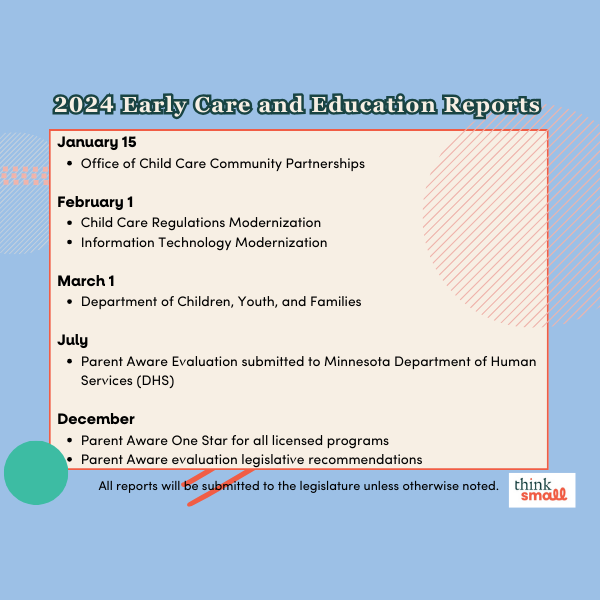In Minnesota and around the country, many children are not on track to read proficiently. The latest Minnesota Comprehensive Assessment (MCA) results show just 48% of 3rd graders met or exceeded grade-level reading proficiency. How we’ve taught reading has left many kids behind, and educators and policymakers alike have felt pressure to find a solution. Last year, Minnesota legislators decided to tackle this issue head on, crafting and ultimately passing a bill known as the READ Act, a $75 million overhaul that aims to change the way Minnesota kids learn to read and raise our state’s persistently low reading scores. The bill focused on K-12 students, and on specific changes to teacher training, curriculum and more, intended to roll out over the next few years. Already, advocates and policymakers are exploring next steps to refine and build on the READ Act, including conversations about how we support early learners from age 0-5. So what will this bill actually do, how will it affect families, and where do we go from here?
What’s in the READ Act?
The READ Act is centered around the goal of every child in Minnesota reading at or above grade level every year, beginning in kindergarten. It hinges on “evidence-based” reading instruction. The goal is to ground instruction statewide in the Science of Reading, a body of research that tells us how the brain learns to read. For starters, this means that any new curriculum that school districts purchase must align with that research. Over the past few years, there has been a growing spotlight on the fact that too many schools are using curricula grounded in what’s known as “balanced literacy”—a model that lacks the explicit instruction many students need to build critical building blocks to reading. The bill also requires that all teachers receive professional development on evidence-based reading instruction, and each district is required to hire a literacy lead. This is critical because, in many cases, teachers were not given the most up-to-date, evidence based training in their preparation programs. Supporting aligned teacher preparation going forward is also part of the bill. Another core piece of the bill is screenings for all students in kindergarten through third grade. Children in these grades will be screened twice a year—once at the beginning and once at the end—for both reading fluency and characteristics of dyslexia. This age is critical because it’s when foundational reading instruction takes place—the ability to read by 3rd grade is predictive of success in future grades, high school graduation, and earning potential in adulthood. The READ Act requires that any student who is behind will receive intervention services, such as summer school or enhanced school-day instruction, taught by a teacher who has completed training in evidence-based reading.
When can children and families expect to see changes?
While the state and districts are hard at work implementing these changes, the READ Act gives districts and schools a few years to train all their staff and implement new curriculum. For example, districts have until the 2026-27 school year until they are required to provide “evidence-based” instruction. While some schools and districts may shift their instructional practices sooner, others may not see a change in their child’s reading instruction until the fall of 2026. One change that may benefit families sooner is the publishing of local literacy plans, another requirement of the READ Act. Beginning in June, districts are required to publish these plans with information on literacy and dyslexia rates, the process for involving parents in reading support, and much more. Interested parents can use local literacy plans to understand the reading landscape in their school district and make informed decisions about their child’s education.
Where do we go next?
It’s already clear that this statewide overhaul will require more resources, and potentially more time, than originally envisioned. State leaders are coming back this year with a few supplemental funding proposals and tweaks to improve the legislation. Another key next step is ensuring the work starts early, when we know children’s brains are developing critical building blocks for reading. While the law includes many positive changes, it contains little for children ages 0-5. The READ Act requires public school prekindergarten teachers to receive training in evidence-based reading instruction, and districts that serve Pre-K students are allowed (but not required) to use READ Act funds to support their literacy learning, but that’s about it. Stay tuned for a second blog in this series with more detail on bridging literacy policy to our earliest learners.  By Madie SpartzMadie Spartz is a Policy & Research Analyst at EdAllies, an advocacy-oriented non-profit with a vision of a Minnesota where every student succeeds in a rigorous and engaging education.
By Madie SpartzMadie Spartz is a Policy & Research Analyst at EdAllies, an advocacy-oriented non-profit with a vision of a Minnesota where every student succeeds in a rigorous and engaging education.








